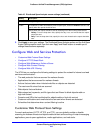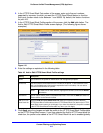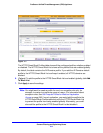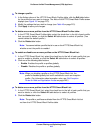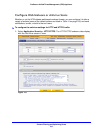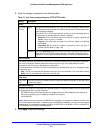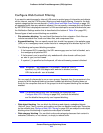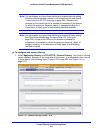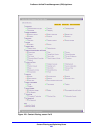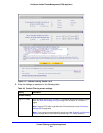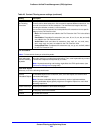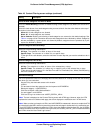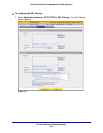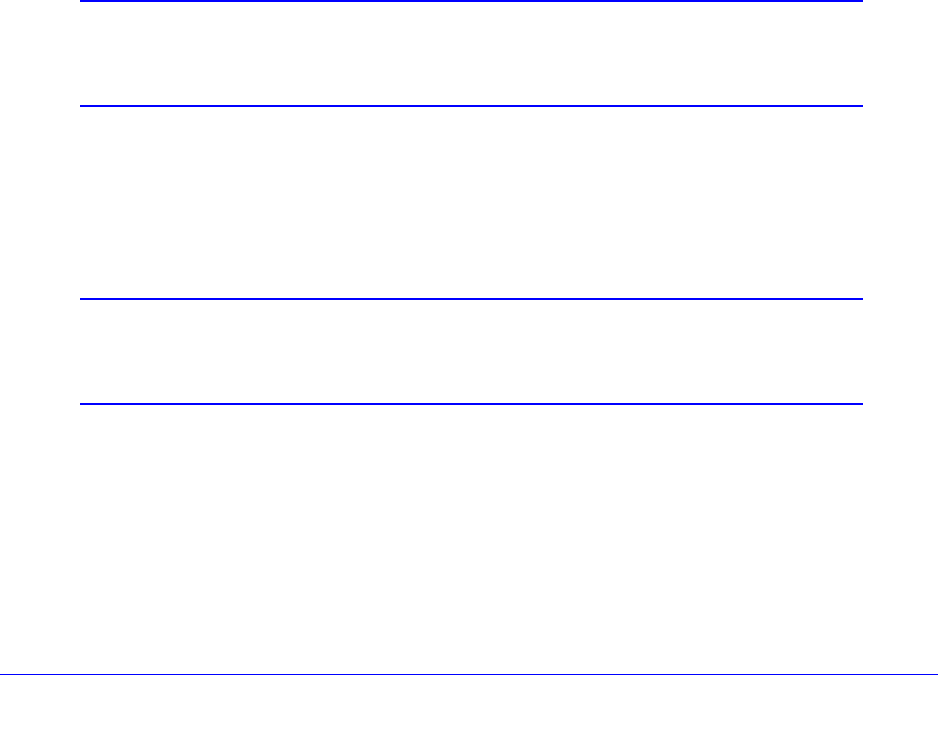
Content Filtering and Optimizing Scans
218
ProSecure Unified Threat Management (UTM) Appliance
Configure Web Content Filtering
If you want to restrict access by internal LAN users to certain types of information and objects
on the Internet, use the UTM’s content filtering and web objects filtering. Except for the web
content categories that are mentioned in Default Email and Web Scan Settings on page 193,
all requested traffic from any website is allowed. You can specify a message such as Blocked
by NETGEAR that is displayed onscreen if a LAN user attempts to access a blocked site (see
the Notification Settings section that is described at the bottom of Table 48 on page 221).
Several types of web content blocking are available:
• File extension blocking. You can block files based on their extension. Such files can
include executable files, audio and video files, and compressed files.
• Keyword blocking. You can specify words that, should they appear in the website name
(URL) or in a newsgroup name, cause that site or newsgroup to be blocked by the UTM.
The following are keyword blocking examples:
- If the keyword XXX is specified, the URL www.zzyyqq.com/xxx.html is blocked, as is
the newsgroup alt.pictures.XXX.
- If the keyword .com is specified, only websites with other domain suffixes (such
as .edu or .gov) can be viewed.
- If a period (.) is specified as the keyword, all Internet browsing access is blocked.
Note: Wildcards (*) are supported. For example, if www.net*.com is
specified, any URL that begins with www.net is blocked, and any
URL that ends with .com is blocked.
You can apply the keywords to one or more groups. Requests from the computers in the
groups for which keyword blocking has been enabled are blocked. Blocking does not
occur for the computers that are in the groups for which keyword blocking has not been
enabled.
Note: The whitelist has priority over the blacklist (for these lists, see
Configure Web URL Filtering on page 224), and both the whitelist
and the blacklist have priority over keyword blocking.
• Web object blocking. You can block the following web objects: embedded objects
(ActiveX, Java, Flash), proxies, and cookies, and you can disable JavaScripts. Even sites
on the whitelist (see Configure Web URL Filtering on page 224) are subject to web object
blocking when the blocking of a particular web object is enabled.
• Web category blocking. You can block entire web categories because their content is
undesired, offensive, or not relevant, or simply to reduce traffic.



